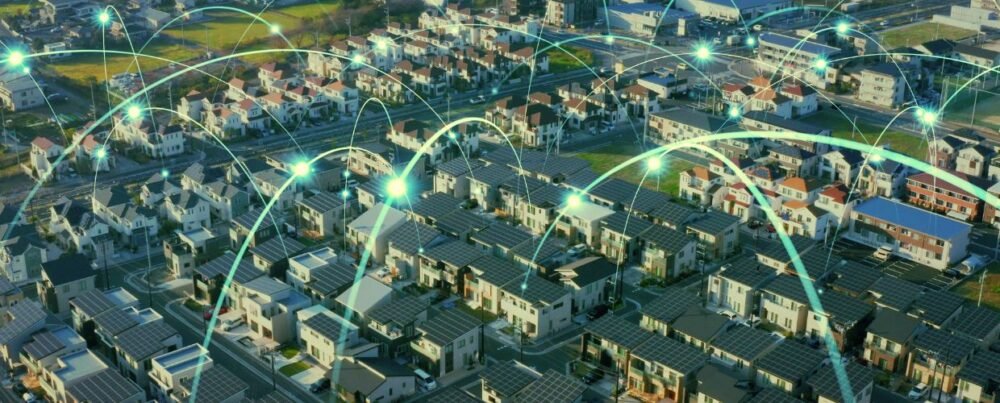The age-old power grid system is transforming remarkably in an era of technological advancements and increasing environmental concerns. Grid modernization, the process of updating and enhancing the electricity grid infrastructure, has emerged as a pivotal endeavor that promises a more efficient and reliable energy distribution system and a path toward a greener and more sustainable future.
Grid Modernization: Breathing New Life into an Age-Old System
The traditional power grid, a complex web of power generation, transmission, and distribution, has been the backbone of modern societies for over a century. However, as the demand for electricity continues to grow, coupled with the need to integrate renewable energy sources, the limitations of this outdated system become apparent. Grid modernization addresses these limitations by integrating cutting-edge technologies and innovative approaches to ensure a more robust, flexible, and responsive energy infrastructure.
At the heart of grid modernization lies the incorporation of smart technologies. Smart grids utilize digital communication and data analysis to monitor and control the flow of electricity more efficiently. These technologies enable real-time monitoring, fault detection, and load management, ensuring a quicker response to disruptions and minimizing downtime. Moreover, smart grids allow for two-way communication between consumers and utilities, paving the way for demand response programs that empower consumers to manage their energy usage and costs actively.
Resilience and Reliability: The Pillars of Modernization
As climate change continues to manifest through extreme weather events, the resilience of our energy infrastructure becomes paramount. Traditional grids are vulnerable to disruptions caused by storms, heat waves, and other environmental factors. Grid modernization enhances the grid’s resilience by incorporating redundancies, decentralized power generation, and microgrids.
Microgrids, in particular, emerge as a solution to the vulnerability of centralized power generation. These localized energy systems can operate independently or in tandem with the main grid, providing power to communities during grid outages. Using renewable energy sources and energy storage technologies, microgrids enhance the energy security and resilience of critical facilities such as hospitals, schools, and emergency response centers.
Enabling the Renewable Revolution
Integrating renewable energy sources, such as solar and wind power, poses a unique set of challenges to the traditional power grid. Unlike conventional power plants, renewables are inherently variable and intermittent. Grid modernization offers a seamless integration of these intermittent sources into the grid.
Energy storage technologies like advanced batteries are pivotal in this integration. Batteries can store excess energy generated during periods of high production and release it when demand surges or renewable sources are offline. It mitigates the variability of renewable energy, allowing for a more stable and consistent power supply.
Moreover, grid modernization facilitates the development of smart market mechanisms. These mechanisms incentivize energy users to adjust their consumption patterns based on real-time energy prices, enabling better alignment between energy supply and demand. Such mechanisms reduce the grid’s stress during peak demand and encourage the adoption of cleaner energy sources.
Challenges on the Horizon
While grid modernization has vast potential benefits, many challenges remain on the path to its full realization. One significant challenge is the cost of implementing modern technologies and infrastructure upgrades. However, it is important to review these costs as investments in a more resilient and sustainable energy future. Government incentives, research funding, and private-sector collaborations can play a pivotal role in making these investments more feasible.
Additionally, ensuring cybersecurity in the era of digital grids is paramount. The increased connectivity and data exchange in smart grids creates new vulnerabilities that must be addressed to safeguard against cyberattacks. Robust cybersecurity measures, public awareness, and education are critical to prevent disruptions to the energy supply and protect consumers’ privacy.
Embracing a Smarter Tomorrow
Grid modernization represents a watershed moment in the evolution of our energy systems. By embracing smart technologies, enhancing resilience, and integrating renewable energy, we set the stage for a more sustainable and resilient future. The benefits extend beyond the energy sector, impacting economies, communities, and the environment.
Transitioning to modernized grids demands collaboration among governments, utilities, industries, and consumers. It’s a collective effort that holds the potential to revolutionize how we generate, distribute, and consume energy. As we forge ahead in the quest for a cleaner and more sustainable world, grid modernization stands as a beacon of hope—a testament to our capacity to innovate, adapt, and build a brighter future for future generations.
Conclusion
In the age of technological marvels and environmental awareness, grid modernization presents an unprecedented opportunity to reshape the energy landscape. The past’s clunky, outdated power grid gives way to a dynamic and intelligent network that promises a reliable energy supply and a platform for sustainable growth.
As governments and industries worldwide invest in modernizing their grids, the vision of a decentralized, resilient, and green energy future comes into focus. The challenges ahead are substantial, but they pale compared to the potential benefits—for our environment, our economies, and the well-being of current and future generations. By embarking on this journey of grid modernization, we set forth on a path of progress that aligns with the pressing demands of our time.












